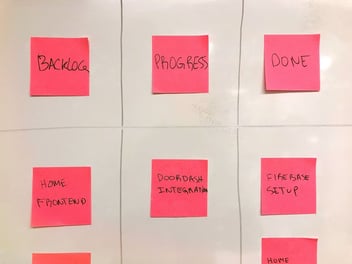The digital industry is catching up
There has been growing interest in understanding emissions in the digital and ICT industry. Big digital players like Google, Microsoft and AWS have committed to power their data centers with renewable energy and become carbon neutral. Vincit has made a commitment to make our own operations carbon neutral already in 2023, while also helping our customers create more efficient and environmentally friendly digital solutions.
But where do ICT emissions come from in the first place? The main source is from the production of electricity needed to run infrastructure and data transfer, as well as emissions from the manufacture of physical devices used to produce ICT solutions. The good news is that by making smarter software and infrastructure choices, the carbon footprint of digital services can be reduced. Here’s how:
🍃 1) Create lean and energy-efficient services
The decisions made in the design phase can have a real impact on the energy consumption, and hence the carbon footprint, of a digital service. For example, the choice of coding language can affect the energy usage rate, as can the overall architecture of the service.
🍃 2) Design easy-to-use services
The expected device for usage of a service matters, as mobile devices are more energy efficient than laptops or PCs. The user interface also makes a difference. Creating lean and energy-efficient services generally improves the customer experience. Sustainable digital products with a good user interface and relevant content provide a better user experience and are more search engine optimization friendly. An important question to consider is whether the service is quick and easy to use, minimizing the time – and therefore energy – users spend to do what they need to do.
🍃 3) Minimize the amount of data transferred
The more heavily a digital service relies on images and videos, the more energy it will consume. In the design phase we should ask if images and videos are always necessary and, if they are, how large the files need to be. The default option can be turning off autoplay from videos and preferring lower quality video with an option for users to choose higher quality.
🍃 4) Host data closer to users
Physical location matters when it comes to transferring data, and the closer that data is hosted to users, the more efficient a service will be – lowering the overall energy use and carbon footprint of the service.
In addition to these broad guidelines, there are many more things that should be taken into account when rolling out low-impact digital services – for example, preferring cloud providers with commitments to use renewable energy.
The next step is measuring performance
Designing more efficient digital services is just one piece of the puzzle. In addition, there is the challenge of actually measuring the carbon footprint of the services. This requires looking at energy usage for data transfer in all the different countries where the digital service will be used.
These measurements can be done by partnering with a company that has experience in measuring the carbon footprint of ICT services. Larger cloud providers like Google and AWS are also starting to provide services to help build a picture of carbon emissions. However, in cases where digital services are built from many different digital product design, getting the full picture still requires some manual research.
It’s not a straightforward process – but it certainly is possible. Indeed, to see how we put theory into practice, you can read about how we calculated the carbon footprint of a website and app we created for the International Biathlon Union (IBU).
At Vincit, this is all part of how we operate when developing digital solutions that enable our customers to keep their endeavors sustainable. We want to help them assess the emissions caused by their digital solutions and develop methods to reduce their carbon footprint.
Need help building or maintaining more environmentally friendly digital solutions? Contact us to discuss more.
📅🌳
I’ll be giving a talk about the carbon footprint digital solutions at:
Interaction 23 event in Zurich on March 2nd 2023 at 16:10 CET



.png?width=352&name=header%20(4).png)